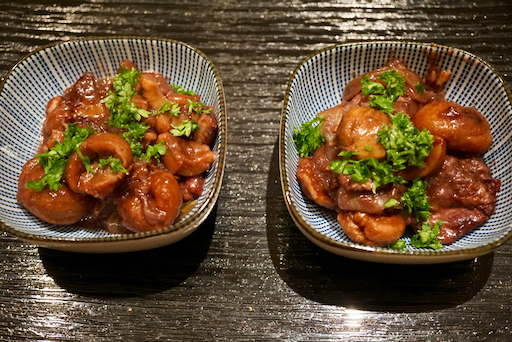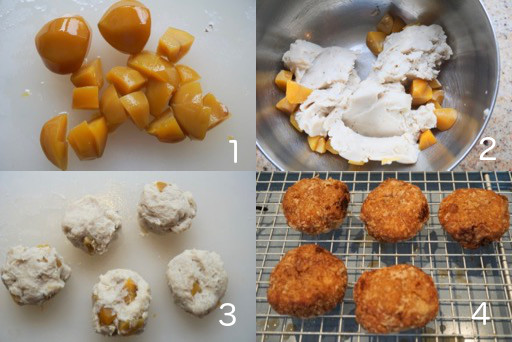Ingredients
2 cups firmly packed chestnut flour
1/2 cup AP flour
1 1/2 tsp baking powder
Pinch of salt
1/3 cup extra-virgin olive oil (medium quality is OK)
1 cup sugar
4 large eggs at room temperature
2 tsp vanilla extract
Directions
Preheat oven to 350°F. Grease a 20 cm 8" springform pan with olive oil then line with baking paper (parchment paper), then grease the paper. In a medium bowl, mix the chestnut flour, AP flour, baking powder, and salt. In a large bowl, beat the olive oil, eggs and sugar for 2 to 3 minutes on speed 7 or 8 until it becomes pale and thick (like pouring cream or runny mayonnaise). Add vanilla extract and beat on speed one for 10 seconds. Add the Dry ingredients and mix in gently using a rubber spatula. Pour the batter into the prepared pan and bake for 45 minutes. It will puff up dramatically in the oven but it collapses as it cools. (This version did not collapse as much as previous nut olive oil cakes). Remove from the oven and allow the cake to fully cool in the pan before releasing from the springform pan. This is a rustic cake that has higher edges and a flatter centre.
This is a very distinctive cake. It has a moist dense texture and a deep rich nutty chestnut flavor. (The flavor is unique, in a good way, and very distinctive.) Because of the intense rich flavor a small piece goes a long way. We found it is particularly good served with a slather of blueberry flavored cream cheese.
4 large eggs at room temperature
2 tsp vanilla extract
Directions
Preheat oven to 350°F. Grease a 20 cm 8" springform pan with olive oil then line with baking paper (parchment paper), then grease the paper. In a medium bowl, mix the chestnut flour, AP flour, baking powder, and salt. In a large bowl, beat the olive oil, eggs and sugar for 2 to 3 minutes on speed 7 or 8 until it becomes pale and thick (like pouring cream or runny mayonnaise). Add vanilla extract and beat on speed one for 10 seconds. Add the Dry ingredients and mix in gently using a rubber spatula. Pour the batter into the prepared pan and bake for 45 minutes. It will puff up dramatically in the oven but it collapses as it cools. (This version did not collapse as much as previous nut olive oil cakes). Remove from the oven and allow the cake to fully cool in the pan before releasing from the springform pan. This is a rustic cake that has higher edges and a flatter centre.
This is a very distinctive cake. It has a moist dense texture and a deep rich nutty chestnut flavor. (The flavor is unique, in a good way, and very distinctive.) Because of the intense rich flavor a small piece goes a long way. We found it is particularly good served with a slather of blueberry flavored cream cheese.



















































